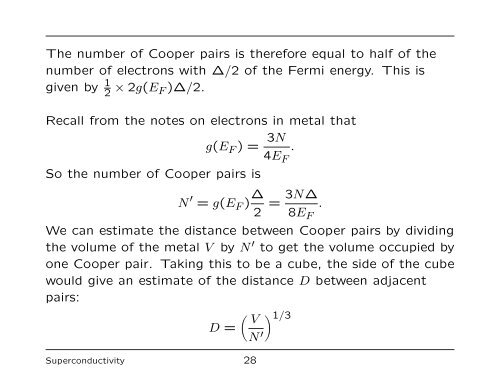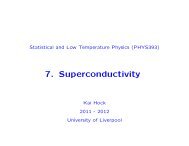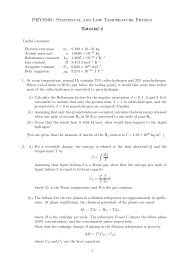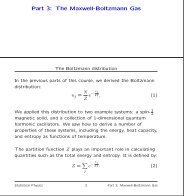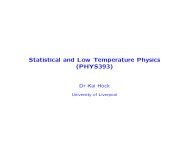The Nature of the Cooper Pair - University of Liverpool
The Nature of the Cooper Pair - University of Liverpool
The Nature of the Cooper Pair - University of Liverpool
You also want an ePaper? Increase the reach of your titles
YUMPU automatically turns print PDFs into web optimized ePapers that Google loves.
<strong>The</strong> number <strong>of</strong> <strong>Cooper</strong> pairs is <strong>the</strong>refore equal to half <strong>of</strong> <strong>the</strong><br />
number <strong>of</strong> electrons with ∆/2 <strong>of</strong> <strong>the</strong> Fermi energy. This is<br />
given by 1 2 × 2g(E F )∆/2.<br />
Recall from <strong>the</strong> notes on electrons in metal that<br />
g(EF ) = 3N<br />
.<br />
4EF So <strong>the</strong> number <strong>of</strong> <strong>Cooper</strong> pairs is<br />
N ′ = g(E F ) ∆<br />
2<br />
3N∆<br />
= .<br />
8EF We can estimate <strong>the</strong> distance between <strong>Cooper</strong> pairs by dividing<br />
<strong>the</strong> volume <strong>of</strong> <strong>the</strong> metal V by N ′ to get <strong>the</strong> volume occupied by<br />
one <strong>Cooper</strong> pair. Taking this to be a cube, <strong>the</strong> side <strong>of</strong> <strong>the</strong> cube<br />
would give an estimate <strong>of</strong> <strong>the</strong> distance D between adjacent<br />
pairs:<br />
D =<br />
Superconductivity 28<br />
�<br />
V<br />
N ′<br />
�1/3


